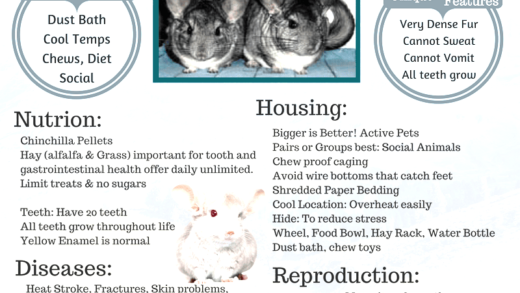This article explores the fascinating world of animals that communicate over long distances, highlighting species like whales and elephants. It discusses how far their sounds can be heard, the types of sounds they produce, and the reasons behind their vocalizations. The article delves into the mechanics of loud sounds, the best environments for sound travel, and intriguing communication facts, comparing the varied styles among species and the influence of their habitats on communication effectiveness.
The Top Seven Long-Distance Communicators
Animals that communicate over long distances possess unique adaptations that allow their sounds to travel great lengths. Here are seven notable examples:
- Whales: Known for their haunting songs, some whale calls can travel over 1,000 miles underwater. Their low-frequency sounds penetrate deep ocean waters.
- Elephants: These giants can communicate using infrasound, which can be heard up to 5 miles away. Their vocalizations travel through the ground, making them effective in dense forests.
- Howler Monkeys: Their loud howls can be heard up to 3 miles away. These primates use their vocal cords to produce deep, resonating sounds that carry through treetops.
- Songbirds: Many species, like the American Robin, have songs that can travel over half a mile. Their high-pitched notes are designed to reach mates and mark territory.
- Frogs: The common bullfrog’s call can be heard up to 1 mile away. Their croaks are loud and resonant, especially during mating season.
- Seals: Seals use vocalizations that can be heard up to 2 miles away underwater. Their sounds are crucial for communication during breeding season.
- Coyotes: These clever canines can communicate over 5 miles with their howls. Their vocalizations serve to coordinate hunts and establish territory.
Understanding these remarkable animals provides insight into how they navigate their environments and establish social connections.
How Far Can They Be Heard?
Determining how far various animals can be heard reveals much about their survival strategies. For instance, whales’ calls can travel more than 1,000 miles in the ocean, showcasing their need to communicate across vast distances. Elephants, with their infrasound, can be heard up to 5 miles away, allowing them to connect with others in their herd.
In contrast, howler monkeys can only reach about 3 miles, but their calls are specifically designed for dense forest environments. The American Robin’s song carries approximately half a mile, effective for attracting mates. Frogs, particularly the common bullfrog, can be heard up to 1 mile away, especially during their mating calls.
Seals vocalize underwater, with sounds that can travel around 2 miles. Coyotes, on the other hand, use their howls to communicate over 5 miles, vital for hunting and territory marking. These distances highlight how each species has adapted its vocalizations to its specific habitat and social needs.
The Sounds That Carry
Animals that communicate over long distances utilize specific sounds that enhance their ability to reach others. For example, the low-frequency calls of whales resonate well in water, allowing them to communicate even at great depths. Elephants produce deep rumbles that travel through the ground, making them effective in dense habitats where sound transmission is limited.
Howler monkeys use powerful howls that can be heard through thick foliage, while songbirds like the American Robin utilize clear, melodic notes to cut through background noise. Frogs’ croaks are designed to be loud and resonant, especially during mating, ensuring they attract attention from potential mates.
Seals use barks and growls, which carry well in water, while coyotes employ sharp howls that can slice through the night air. Each sound is adapted to its environment, ensuring effective communication across distances.
Why Do They Need to Shout?
Animals that communicate over long distances often do so for several critical reasons. Long-distance communication is essential for survival, mating, and territory establishment. Here are some key reasons:
- Mating Calls: Many species use loud vocalizations to attract mates. For example, the common bullfrog’s croak is designed to lure females, especially during the breeding season.
- Territorial Marking: Animals like coyotes howl to establish their territory. Their calls warn other animals to stay away, ensuring that they maintain control over their hunting grounds.
- Social Bonding: Elephants use infrasound to communicate with herd members, helping to maintain social bonds over large distances. This is vital for group cohesion.
- Warning Signals: Many animals shout to alert others of danger. Howler monkeys, for instance, use their loud calls to signal the presence of predators.
In summary, these vocalizations serve crucial purposes, from attracting mates to warning others, highlighting the significance of sound in the animal kingdom.
The Mechanics of Loud Sounds
Animals that communicate over long distances have evolved specific biological adaptations that enable them to produce powerful sounds. These adaptations vary significantly among species:
- Vocal Cords: Animals like howler monkeys have elongated vocal cords that allow them to produce deep, resonating sounds. This structure helps their calls travel far.
- Body Size: Larger animals, such as elephants and whales, benefit from larger body sizes that amplify their vocalizations. Their massive lungs also enable them to generate strong sound waves.
- Sound Production Mechanisms: Some species, like frogs, use unique methods to create sounds. Frogs can expand their vocal sacs, which act like amplifiers, allowing their calls to resonate widely.
- Frequency Range: Low-frequency sounds travel better over long distances in water and dense vegetation. Whales utilize this principle, allowing their songs to reach far across ocean depths.
These adaptations underscore the remarkable ways animals have evolved to communicate effectively, ensuring their survival and social interaction in diverse habitats.
Best Environments for Sound Travel
Understanding the environments where sounds travel best helps us appreciate how animals communicate over long distances. Here are some key habitats:
- Open Water: The ocean is an ideal medium for sound travel. Whales utilize this environment to send their calls across vast distances, benefiting from minimal obstruction.
- Forests: Dense forests can inhibit sound travel, but animals like elephants and howler monkeys have adapted to these environments. Their low-frequency and powerful sounds penetrate through thick vegetation.
- Grasslands: In open grasslands, sounds can travel freely. Coyotes and songbirds thrive here, using their vocalizations to communicate effectively over long distances.
- Wetlands: Frogs are commonly found in wetlands, where their loud calls echo across still waters, making it easier for them to attract mates.
These environments play a crucial role in determining how effectively animals can communicate, showcasing the fascinating interplay between habitat and sound transmission.
Fascinating Communication Facts
Animals that communicate over long distances exhibit some truly fascinating behaviors. For instance, whales are not just singing; they are engaging in complex social interactions across the ocean. Some researchers suggest that these songs can change seasonally, indicating different social contexts or mating strategies. Elephants, on the other hand, utilize their infrasound not only to connect with distant herd members but also to coordinate movements and share information about food sources. Howler monkeys have a social structure that revolves around their vocalizations, with dominant males often leading the chorus. This shows how sound plays a crucial role in maintaining hierarchy.
Moreover, the communication habits of these animals can have surprising effects. For example, in urban areas, songbirds may alter their songs to be heard over the din of traffic, demonstrating their adaptability. Frogs, during mating season, can create a symphony of croaks that attract mates, showcasing a natural phenomenon where more croaking leads to higher chances of reproduction. Such behaviors highlight the unique ways animals have adapted their communication methods to thrive in their environments.
Comparing Communication Styles
When examining how different species communicate over distances, distinct patterns emerge. For instance, whales rely on low-frequency sounds that can travel great distances underwater, while elephants use infrasound that travels through the ground, making it effective in dense forests. In contrast, the high-pitched songs of songbirds are designed to cut through ambient noise, allowing them to reach potential mates effectively.
Howler monkeys employ powerful howls that resonate well in forested areas, while coyotes use sharp howls that echo across open landscapes. This contrast in communication styles highlights the adaptability of these animals to their respective habitats. Each species has honed its vocalizations to suit its environmental needs, showcasing an evolutionary response to both social and ecological pressures.
The Role of Environment
The environment plays a pivotal role in shaping animal communication. Open water, for example, is a perfect medium for sound travel, allowing whales to communicate over vast distances. In contrast, dense forests present challenges; however, animals like elephants and howler monkeys have developed sounds that penetrate through foliage effectively. Grasslands allow for unimpeded sound travel, making them ideal for coyotes and songbirds, while wetlands provide a unique acoustic environment for frogs, where their calls can resonate across still waters.
These varying habitats significantly affect how well sounds travel and how effective communication is among species. Factors such as humidity, temperature, and vegetation density all influence sound propagation, showcasing the intricate relationship between animals and their environments. Understanding these dynamics not only reveals how animals interact but also emphasizes the importance of habitat conservation to maintain these vital communication channels.





Comments are closed.